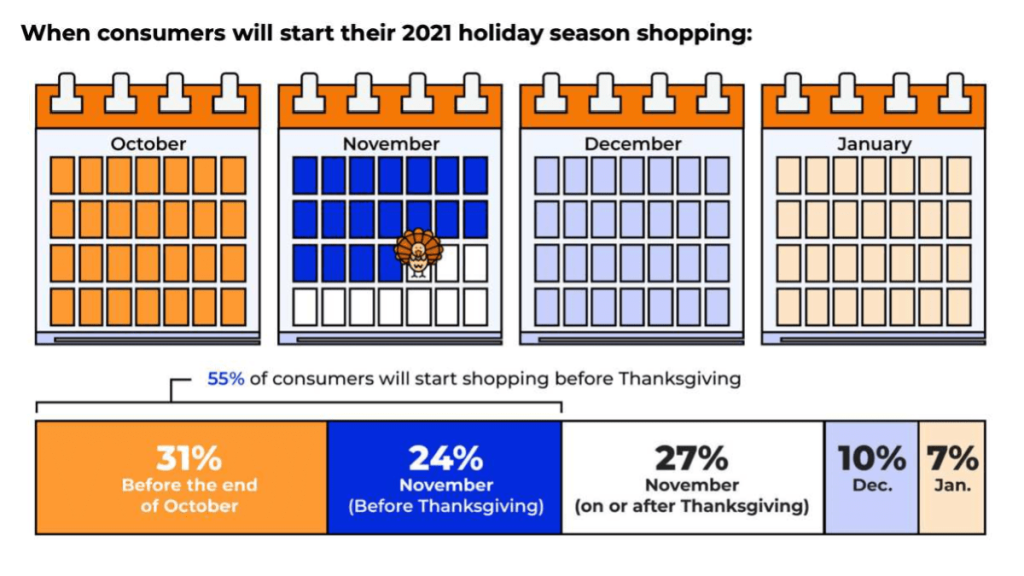
You’ve Gotta be Shipping Me!
Supply chain shortage recap
Last month we dove into the need for digitized brands and fully-traceable supply chains. The driving force behind this need is the global supply chain shortage, due to the COVID-19 pandemic. Stay-at-home and social distancing measures have put pressure on global supply chains to meet demands in many areas—especially those that increased during the pandemic (such as home goods). Even though many parts of the world have “opened up”, the impact of the pandemic will be felt on our supply chains long after the imminent danger of the pandemic subsides.
Not only are products taking longer to get to consumers, as many of them are backordered, but shipping costs have also skyrocketed. According to Bloomberg, “the higher shipping costs have been sparked by a combination of factors, including soaring demand amid stimulus checks, saturated ports, and too few ships, dockworkers and truckers.”
The longevity of this issue is bad news as we head into the holiday season. With “stubbornly high shipping expenses for businesses are getting sealed into contracts for the next 12 months,” many companies are being forced “to pass the extra costs on to consumers.” (Bloomberg, 2021.) This year end period is crucial for many businesses, so it’s important that companies have as much visibility into their supply chain as possible, so that you can share things like realistic shipping times for your customers, and educate your customers on the importance of starting their shopping early.
According to an article in CNN Business, “Shoppers… may need to have several different gift ideas up their sleeves.” Bob Biesterfeld, the CEO of C.H. Robinson, said “if you buy most of your presents online, get it done early. Delivery time may be four to six weeks.”
This is great information for brands to have now. Many consumers don’t typically start their holiday shopping until the second half of November, aligning with typical Black Friday sales post-Thanksgiving. But that’s changing this year, and savvy consumers are already capitalizing on sales starting early. If your company hasn’t gotten a jump on an earlier timeline, now’s the time to push out holiday marketing and make sure your supply chains are as prepared as possible.


Black Monday – Friday?
How “Black Friday” has turned into a multi-month event
We’ve changed how we travel, dine, and go to the doctor’s, but we’ve also changed how we holiday shop because of the pandemic. Last year, holiday shopping overwhelmingly took place online, and while in-person shopping has definitely increased in 2021, many people will still turn to online retailers during this holiday season. Additionally, according to Yahoo, “29% of U.S. consumers plan to spend more on holiday shopping than they did last year”.
Online retailers have taken note. Because of supply chain issues and increased demand, many online retailers have already slashed inventory prices to typical “Black Friday” levels. Among these are Amazon, clothing retailer Nordstrom, Best Buy, and Walmart. Because of the supply chain issues, companies would not be able to meet the demand for Black Friday level spending if it isn’t spread out. So if you’re waiting for a deal to make that big holiday purchase the time is now.
Clothing, which as we all know operates seasonally, is a slightly different story.
When it comes to apparel, such as sweaters, boots and holiday clothing, you are better off waiting until November, Jeffries retail analyst Janine Stichter said.
That’s because right now retailers aren’t fully stocked thanks to delivery delays.
When it comes to apparel, such as sweaters, boots and holiday clothing, you are better off waiting until November, Jeffries retail analyst Janine Stichter said.
That’s because right now retailers aren’t fully stocked thanks to delivery delays.
However, make your move once stores are stocked, which Stichter expects in November. While retailers typically tend to replenish merchandise during the holiday season, that will be unlikely this year. “If you don’t buy it and it sells out, it won’t become available again,” Stichter said.
CNBC, 2021
It’s safe to say that the traditional holiday season has expanded to encompass October. And while we likely won’t hear Christmas jingles anytime in the next couple weeks, it’s definitely time to strike while the inventory is available, and educate your customers on why they should too.


Trace, Share, Connect
How Vi3’s suite of tools can help you in times of change

While implementing new systems for traceability, brand protection, and consumer engagement can be time-consuming and costly, these measures have been shown time and time again to be a worthy investment of your time and money. If anything, the pandemic over the last year and a half has shown us that it doesn’t hurt to be prepared.
Many companies could have saved millions with systems in place to better predict shortages and have a handle on their inventory. Not only this, but companies with fully-traceable supply chains have undoubtedly acquired new loyal customers throughout the pandemic, as their shipping time predictions are better, and conscious consumerism has really come to the forefront. Brands who are able to share exactly where their product was made and how it gets to the consumer, have a leg up in their marketing tactics now.
With the effects of COVID-19 projected to last well into 2022, and by many reports into 2023, now is a better time than ever to implement these systems. Our suite of tools equip you with the live-time data necessary to make better-informed decisions, navigate returns and authentication amidst a growing counterfeit market, and connect to consumers in new and convenient ways.
If you’re ready to get a grip in this ever-changing landscape, our team of experts are standing by to help. Contact us today.